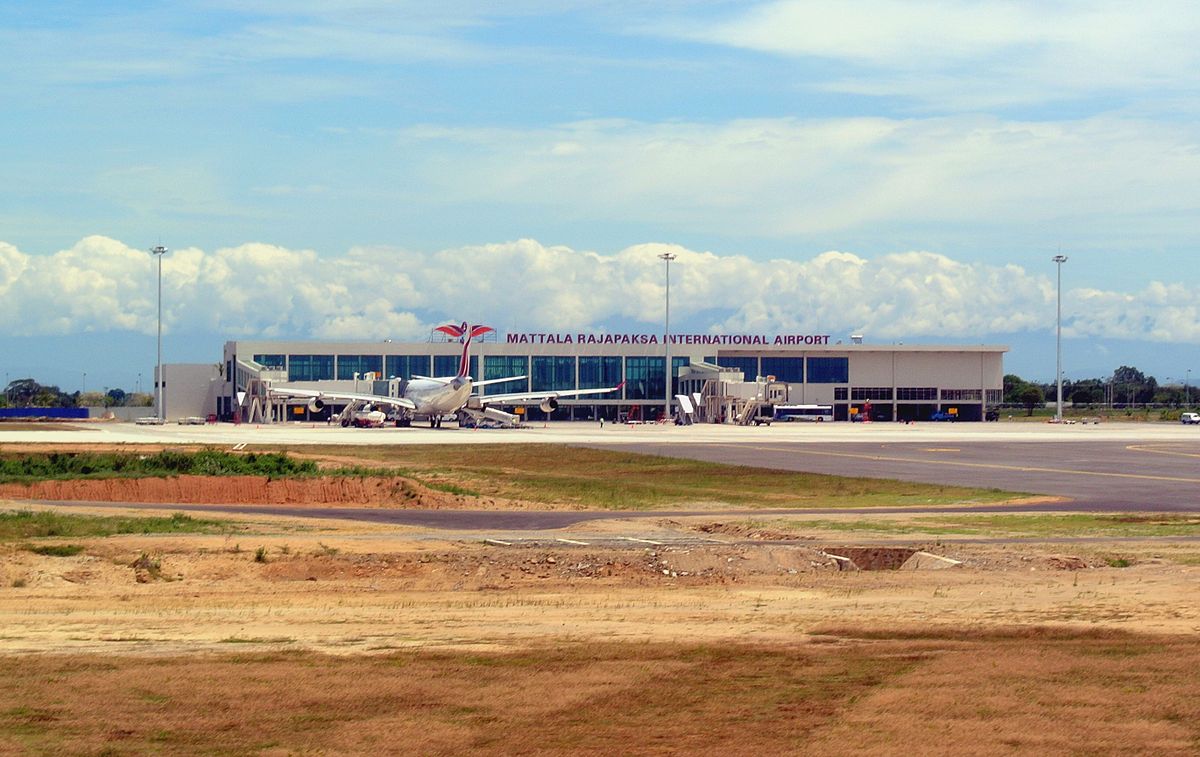Reading Time: 4 minutes
India has scored a quiet but important diplomatic victory over China in Sri Lanka. Beijing was dead against India taking over the Mattala airport. In the Sri Lankan parliament, the Opposition led by former Prime Minister Mahinda Rajapaksa’s Sri Lanka Freedom Party asked the government whether it was handing over the Mattala to India. A report, for Different Truths.
Last week, Sri Lanka finally agreed to let India operate the Mattala airport situated about 40 kms north-east of the Hambantota seaport that China has built in the southern tip of the island nation. China has acquired 60 per cent stake in the project as Sri Lanka was unable to repay the debt to the Chinese company that built it.
India has thus scored a quiet but important diplomatic victory over China in Sri Lanka. Beijing was dead against India taking over the Mattala airport. In the Sri Lankan parliament, the Opposition led by former Prime Minister Mahinda Rajapaksa’s Sri Lanka Freedom Party asked the government whether it was handing over the Mattala to India “to please the super powers India and China.”
It may be recalled that Rajapaksa’s reign was marked by a strong pro-China tilt in Sri Lanka’s foreign policy. With Chinese aid he wanted to build a big seaport at Hambantota, an international airport at Mattala and a cricket stadium with all modern facilities. The seaport has come about but the Chinese are the major stakeholders in the project.
Next came the Mattala international airport. Mattala came to be known as the “world’s emptiest airport”. Initially, one international flight used to take off from this airport once a week. In May this year, even that stopped. The airport was claimed to have the potential of handling a million passengers a year, rising to five million passengers, 50,000 tonnes of cargo and 6,250 flights by 2028. But after incurring a loss of 20 billion rupees, that dream turned out to be a nightmare.
Why, then, was India interested in taking over this white elephant of an airport, which is likely to ever remain a financial liability? The reason is strategic. Just 40 kms down south from Mattala, China has built the Hambantota seaport. India fears that in the not-too-distant future, China is likely to set up a naval base here – secretly, if possible and openly, if necessary, disregarding possible objections from Colombo. India’s fear of China setting up a naval base in future is not totally unfounded. The way Sri Lanka, like many other Asian countries, is coming under an increasing Chinese debt burden, it is quite possible that a situation may arise in future when Sri Lanka will not be able to say ‘No’ to a Chinese demand that the PLA Navy be allowed to build a naval base at Hambantota.
Controlling the Mattala airport will enable India to keep a permanent surveillance on Hambantota and watch how the port is being used. As has been pointed out by foreign experts, it is difficult to conceive of the Chinese navy developing a strategic facility at Hambantota without controlling the Mattala airport. That is why India is willing to spend $300 million to get an airport worth $210 million. The Mattala airport will now be developed as a Sri Lanka-India joint venture, with India holding the majority stake. However, the details of the development of the airport have not been disclosed.
Some strategic thinkers believe that the scene of any future confrontation between India and China is more likely to be the Indian Ocean rather than the high Himalayas. In early 2016, Bangladesh had politely declined a Chinese offer to build a port at Sonadia near Cox’s Bazar (Chittagong) in Bangladesh. A port at Sonadia would have brought Chinese presence uncomfortably close to India’s Eastern Naval Command at Vishakhapatnam and the only joint three services command in the Andaman and Nicobar islands.
China is also building another massive project in Sri Lanka – the $1.4 billion Colombo Port City on 269 hectares of land reclaimed from the sea (Bay of Bengal). It will be a big commercial hub. The net effect of all these Chinese-assisted projects is that China’s economic grip on the island nation is tightening.
India is fully aware that it faces China’s challenge in the field of financial assistance to the neighbouring countries as well. It is trying to meet this challenge as best as it can. The Exim Bank of India has extended a loan of $45.27 million for rebuilding the Kankesanthurai port in northern Sri Lanka. The port was devastated in the tsunami and the cyclone that hit it in 2004 and 2008. In 2016 India advanced a credit of $318 million for railway development. India’s total loan assistance to Sri Lanka is now over 1200 million.
To forge closer and stronger ties with Sri Lanka, India should offer loans on more attractive terms than the high rate of interest charged by the Chinese companies. Also a solution will have to be found as to how to solve the problem of Indian and Sri Lankan fishermen often intruding into the territorial waters of each other, causing much bitterness.
Unlike his predecessor, Prime Minister Maithripala Sirisena has warm feelings for India. Handing over the Mattala airport to India in the face of criticism by the Opposition is symbolic of his strong desire to deepen friendship with India. New Delhi has to nurture this relationship assiduously.
Barun Das Gupta
©IPA Service
Photo from the Internet
















